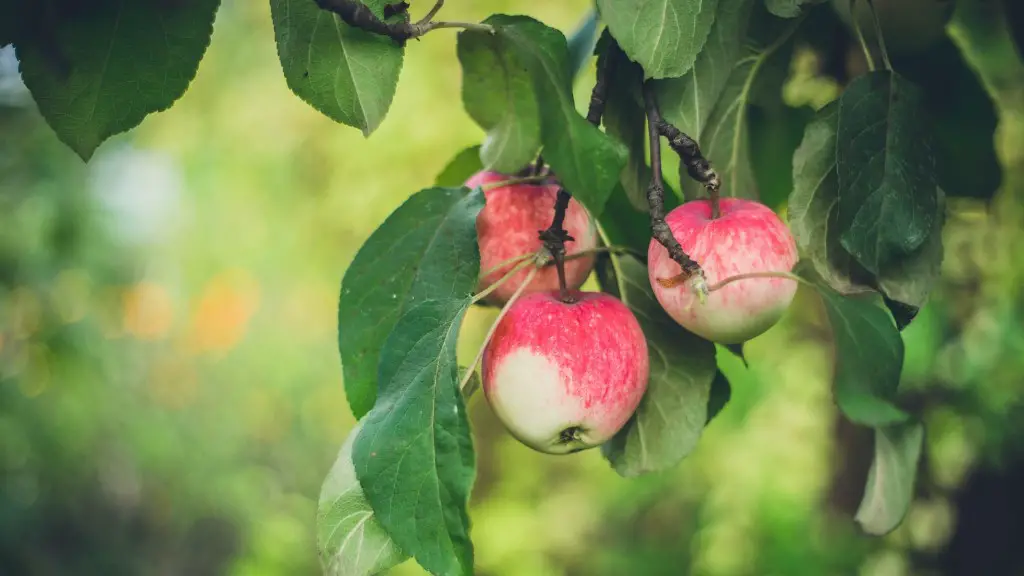Background Information
Palm trees are a type of tropical tree which grow mainly in tropical climates or areas with warm temperatures. Palms require adequate sunlight, water, and nutrients to sustain growth. Without these conditions, it is possible that a palm tree could stop growing and die. Since palms are a slow-growing plant, it may take some time to spot any warning signs that indicate lack of health, vigor, or growth.
Nutrients
Nutrients are necessary for a palm tree to survive and grow. Without regular feeding, the tree could become malnourished and stunted. A mature palm tree needs regular feeding of nitrogen, phosphorus, and potassium to stay healthy. These can be found in a fertilizer formulated specifically for palm trees. Micronutrients may also be necessary, such as iron and magnesium, which help the tree absorb and use the other essential nutrients.
Pathogens and Insects
Palm trees are susceptible to many different pathogenic and insect-borne diseases. Though some of these diseases can be treated with fungicides, insecticides or other treatments, some will still be fatal to the tree. Additionally, insect infestations can cause a decrease in the tree’s health, making it difficult for the tree to survive and grow.
Light
Palms require adequate sunlight to develop and grow properly. Without enough light, the leaves could wilt and the tree could eventually die. Inadequate light can be caused by lack of sun exposure or too much shade. Depending on the type of palm tree, too much sunlight can also be a problem and may cause the leaves to turn yellow. To avoid this problem it is important to plant the tree in an area that receives the right amount of natural daylight hours.
Water
Palms are particularly sensitive to a lack of regular waterings. Without the right amount of moisture, the tree’s leaves may brown and wilt, leading to dehydration and eventual death. It is important to water the tree regularly and monitor the soil for signs of dryness: if the top layer of soil is dry, it is probably time for a deep watering. In addition, palms require sandy soils with good drainage to avoid root rot.
Environment
Palm trees can also be affected by their environment. If the soil has too much salt or other toxins, the tree may not be able to absorb the necessary nutrients. In addition, if the tree is exposed to extreme temperatures or too much wind, it may not be able to survive. It is important to research the specific type of palm tree and its specific environmental needs before planting it.
Mycelial influence
A species of mycelia, fungi which grow near the roots of a palm tree, can influence the growth of the tree. While fungi are usually beneficial for plant growth, some species such as Phytophthora and Pythium can cause root rot and other diseases which can lead to stunted growth and even death. Additionally, the fungi can compete with the tree for resources like water and nutrients, hindering its growth.
Root problems
The roots of a palm tree are the anchoring structure and can severely affect growth if they suffer from damage or disease. Poor care of the planting site, improper planting techniques, or lack of mulch can all lead to root problems. Additionally, if the tree is exposed to prolonged periods of waterlogging, the roots can be damaged and the tree can eventually die.
Overwatering
Too much water can have a detrimental effect on the health of a palm tree. If left in standing water for too long, the root system can become waterlogged and the tree will eventually die. Additionally, overwatering can cause other problems such as nutrient deficiencies or the rotting of the tree’s base.
Underwatering
Underwatering is also a problem for palms: without enough water, the tree can become dehydrated and the leaves will wilt and brown. Without enough water and nutrients, the tree may be unable to develop further, resulting in stunted growth.
Pruning
It is important to prune a palm tree to promote a healthy, symmetrical shape and to remove any dead or diseased leaves. Pruning can also encourage new growth and help stimulate the appearance of new buds. Incorrect pruning, however, can have an adverse effect and lead to the stunting of the tree’s growth.
Conclusion
If a palm tree is not growing, there are many possible causes. It is important to assess the tree’s environment and identify any issues that may be impacting its growth. Once any problems are identified, they can be addressed to help the tree develop properly. With the right soil, sunlight, water, and nutrients, a palm tree can be healthy and thrive.


